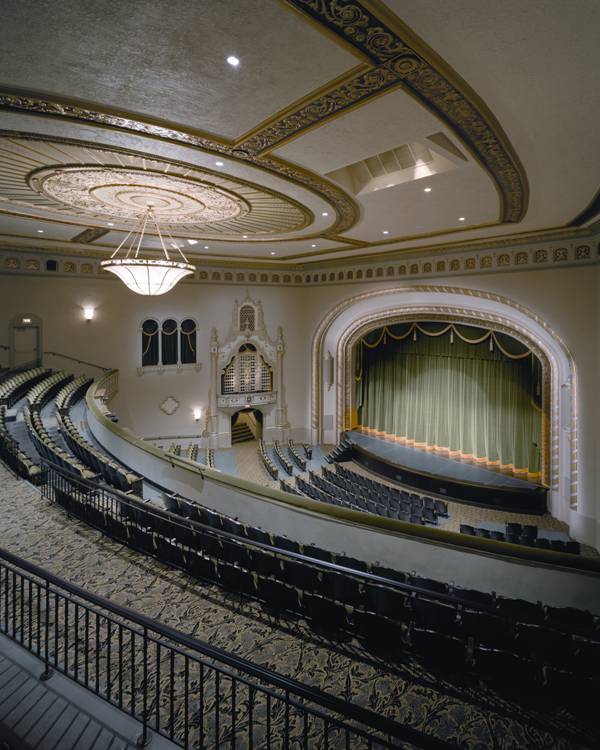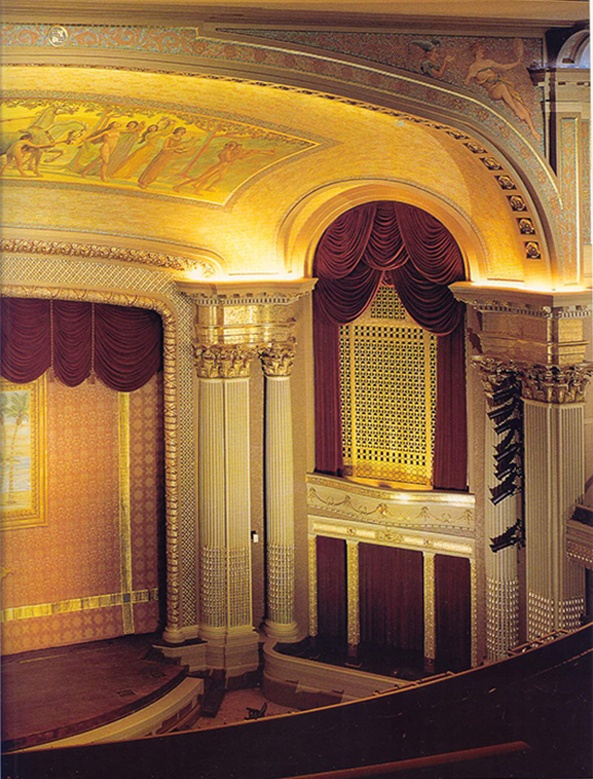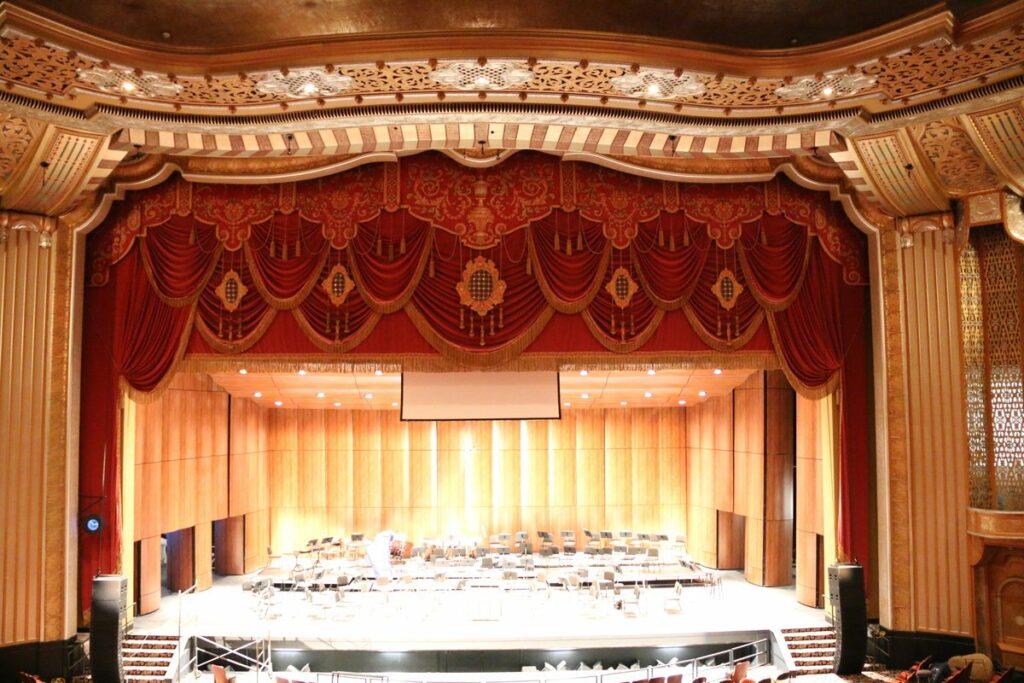Drapery
We’ll custom manufacture durable, high-quality drapes of any type or size, including stage, house and acoustical drapery. We also provide lambrequins, cycloramas and scrims. Learn more about our drapes below.
Stage Drapery
We produce a variety of stage drapes, including proscenium and masking drapes.
Proscenium Drapes
A Proscenium Drape creates a sound and sight barrier between the audience and stage. Other terms include Front Drape, Main Drape, Grand Drape, Act Drape and House Drape. The proscenium drape is an important design element often fabricated to match the décor and color scheme of the theatre or auditorium. Some include trimmings such as fringe, braid or tassels.
Styles of proscenium drapes include guillotine – which raises and lowers vertically – and traveler – which parts at the center and moves horizontally. Most common is the Pleated Traveler, which gathers as it opens. Other designs are Venetian, Austrian and Tableau Drapes.
Common fabrics include Velour (cotton or synthetic), Damask and Doral, which is a vinyl-backed material that’s flame resistant. Lining is optional.
A Proscenium Valance can be added to enhance the dramatic effect. It can be pleated to match the drapery or lined with decorative detail.
Masking Drapes
Masking drapes are located behind the proscenium drapes and they’re used to hide stage and lighting equipment and backstage areas. Styles include:
- Valance
- Front Drape
- Borders
- Legs
- Travelers
- Cycloramas
- Scrims
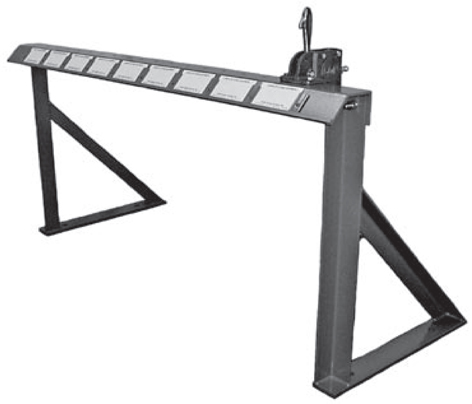
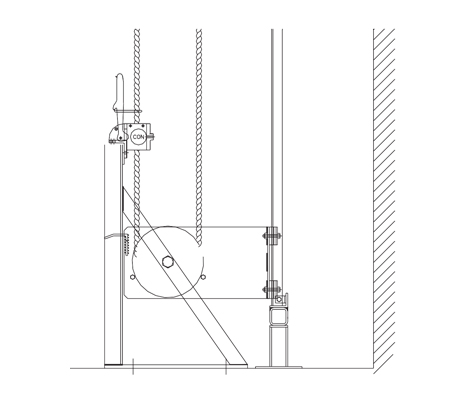
Borders
Borders hide lights and other equipment above the stage. They hang from pipe battens with tie lines.


Legs
Legs or Side Drapes hide off-stage areas and provide wings for entrances and sidelights. They can hang from pipe battens with tie lines or from a traveler track with hooks.


Travelers
Travelers divide stages to create smaller spaces and/or hide equipment and backdrops near the back wall. Options include one panel that travels on a curved track or two panels that are open to the sides with a center overlap.


Cycloramas
Cycloramas are commonly found at the rear of the stage and are used with special lighting instruments to create the illusion of the sky, obtaining lighting effects or showing unlimited space/distance in the background of exterior scenes. The purpose is to complement a special scene or dramatic moment. Options include horizontal seams, seamless muslin fabric or canvas. Cycloramas also include painted, printed and single-color drops.


Scrims
Sharkstooth Scrims
A Sharkstooth scrim can be used in a variety of ways. When lit from the front, it’s opaque; but when lit from the back, it’s translucent. That functionality allows for a wonderful bleed-through effect, revealing or concealing other backdrops, scenery and actors.


Leno-filled Scrims
Filled Scrim or Leno cloth is a Sharkstooth Scrim with the holes filled in. Its surface is a soft texture look that reflects light making it ideal to use as a cyclorama or bounce drop. Filled scrims are ideal for projecting abstract shapes and patterns because of their highly reflective surface. The texture of the surface will reduce or weaken high resolution and is not the best for video projection use.


House Drapery
House Drapery refers to any draperies found in the audience area. It could be decorative drapery found in the box boom areas on either side of the proscenium opening and compliment a Lambrequin, as well as drapes that travel or just swag in doorways. House Drapery could also include railing skirts as most often found at the edge of a balcony.
Lambrequins
A lambrequin is an ornate decorative drapery found in the proscenium opening with an array of embellishments to include swags, jabots, fringe, medallions, tassels, roping.
Acoustical Drapery
Acoustical drapery controls sound vibration and insulates your performance space giving the end user the ability to control the reverberations that vary from a soft sound found. Available with manual and motorized rigging.


Manual


Motorized


Historical Replication


Flame Retardancy
Building codes require that all theater drapes be flame retardant. The fabric is typically classified as Inherently Flame Retardant (IFR), Flame Retardant (FR), or Durably Flame Retardant (DFR).
Inherently Flame Retardant (IFR) fabrics are woven from innately noncombustible fibers. That means they don’t require the addition of chemicals. And since the flame retardancy is woven into the fabric, the materials are expected to remain fire retardant throughout the product’s lifetime, even after repeated dry cleanings.
Flame Retardant (FR) fabrics are woven from natural and/or synthetic yarns, then treated with a flame retardant chemical. Since most FR chemicals are water soluble, the treatment will wear over time; repeated dry cleanings cause the treatment to wear even faster. Because of that, the fabric will require regular testing and re-treatment.
Durably Flame Retardant (DFR) Fabrics are made from a combination of polymer extruded filament fibers and non-water-soluble chemical compounds. When washed properly, the flame retardancy typically withstands many cycles, making DFR fabrics flame retardant for life depending on the fabric application.


